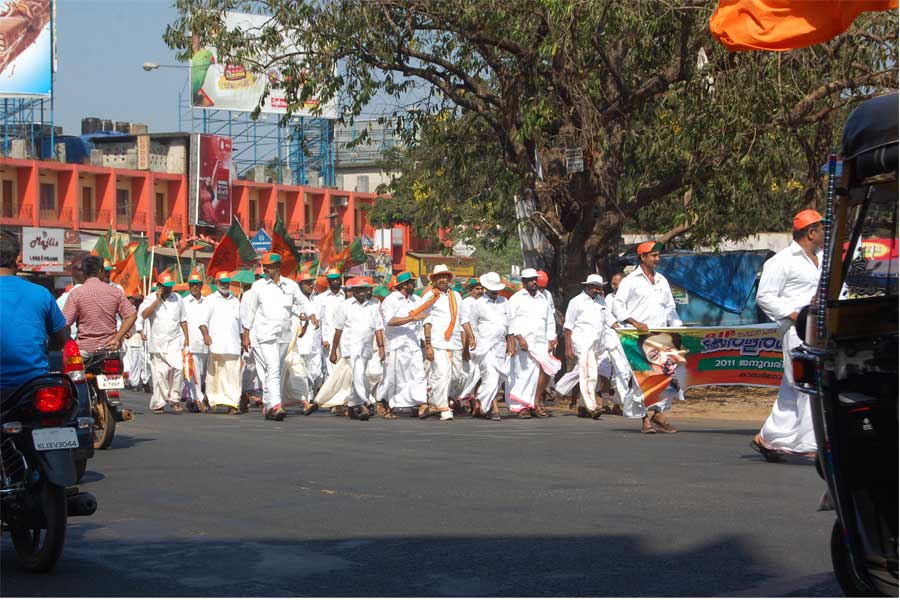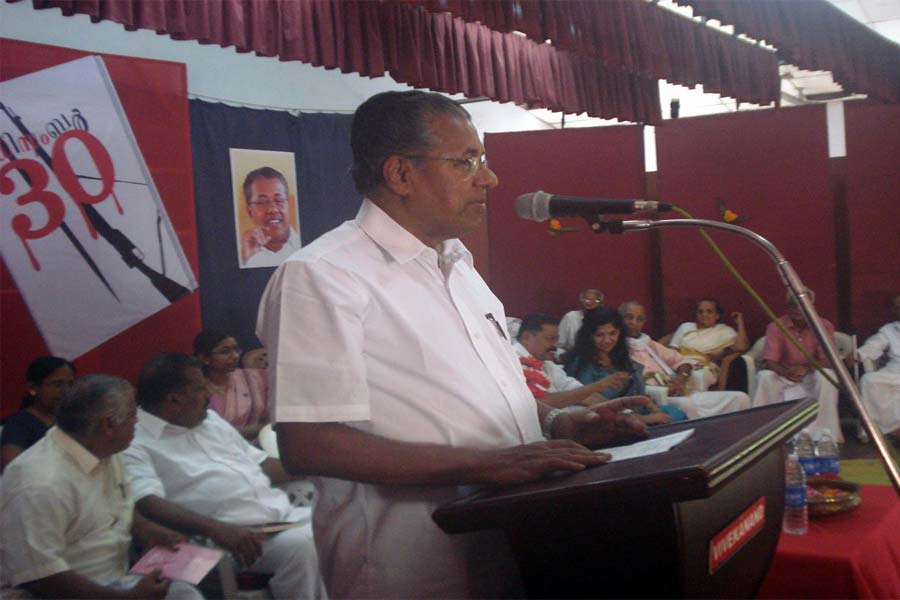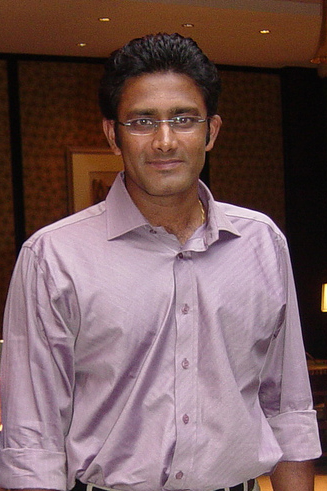
An unmistakable message from the 2019 Lok Sabha elections in India is the emergence of a cosmopolitan Hindu identity cutting across the seemingly insurmountable barriers of caste and regional diversities. This is a phenomenon that has evaded the many waves of Hindu resurgence in the past, and its impact on Indian politics in the coming days would be substantial. The politics of secularism is vacating the centre stage, leaving the scene to the rising Hindutva crescendo.
However, it is assumed in political circles that Kerala successfully bucked the dominant national trend, resisting the onslaught of the Hindutva forces. Kerala definitely threw up a very interesting outcome, vastly different from the national scenario. A tally of 19 seats for the Congress-led United Democratic Front and, a solitary win for the CPI (M) with the BJP winning none, it does look like a resounding victory for secular forces.
But a closer inspection would reveal some ominous developments taking shape that might indicate the emergence of a cosmopolitan Hindu identity in the state cutting across other intra-community divisions and rivalries. It was an objective that persistently remained elusive for the BJP in the past decades, putting the most serious hurdles before the party and its allies. However, the present election results throw up new a trend which calls for some serious attention.
Before that, let us take stock of the actual ground realities. In this Lok Sabha election, the state registered one of the biggest voter turnouts at 78 percent, a figure that was witnessed only twice earlier in its electoral history, the earlier occasions being in 1977 and 1989. On both these occasions, the Left forces led by the CPI (M) were decimated in the state as it happened this time. Compared to 2014, there was a five percent increase in voting.
How do we read this? A large segment of our passive society, who normally ignore the hue and cry of electoral politics and refuse to take the trouble of queuing up in polling booths, decided that there were issues this time that could not be passed up. What really made them stir out of their slumber?
I think there were two issues that dominated this election in Kerala, and both were issues quite unique at this point in our history. The first was the Sabarimala issue being persistently raised by all political parties seeking electoral advantage, and secondly, it was the issue of political violence that has permeated our public life in a big way, at least in certain parts of the state.
Let us examine the Sabarimala issue first. Simply put, it was an issue of the rights of devotees of all ages and genders to come and worship the leopard-mounted Lord in his forest abode. The demand came up in the form of a Public Interest Litigation (PIL) in the Supreme Court, where some female activists associated with the Sangh Parivar, or their close relatives, were the original petitioners.
The three-judge bench who heard the matter ordered in the affirmative, with the sole female judge dissenting. The point she raised was important—that the deities too have their rights and privileges and faith-based matters cannot be adjudicated purely on the basis of constitutional rights.
The case and the verdict revolve around a fundamental dichotomy inherent in Indian social life. On the one hand, India is a cultural and historical entity that has evolved through thousands of years into a civilization with multiple streams, and on the other, the country is a constitutional democracy shaped by its anti-imperialist freedom struggle. Or simply put, India as an ancient civilization versus India as a modern secular democracy.
The divisions within the Supreme Court bench over the issue itself indicated the deep chasms that divide the country and its people. There is no doubt the Constitution provides for individual freedoms, gender equality and other democratic values integral to a secular democracy. The problem is that there are rival currents in our history and tradition that strongly challenge these modern ideas with equal vehemence and strength.
That is what really happened in the case of Lord Ayyappa. The non-presence of women of menstruating age in Sabarimala is part of a tradition, and not enforced by any temporal authority. Who brought up this tradition and why did they attempt to enforce it? It has been part of a belief system and devotees trooped to this isolated temple observing rigorous rituals and practices that include 41 days of total abstinence among other rituals.
Because of their biological peculiarities like the monthly menstrual cycles, women were not expected to follow them. Celebrating menstruation is unlikely to change the mindset of our tradition-bound citizenry, despite the constitutional powers and rights its votaries may enjoy. That calls for a change in the public attitude and it takes time to persuade the public to change the way it thinks.
This is where the CPI (M)-led state government failed while tackling the complex situation. They had other options, like going for a review petition to buy time in view of the extremely difficult conditions that prevailed in the Pamba region following the great floods during the previous monsoon season. The floods had completely destroyed the infrastructure and amenities on the route to the Sannidhanam and it was imperative on the part of the government and the Devaswom Board to tackle such matters of immediate practical concern on a priority basis.
But no such practical concerns were brought up and there was no attempt on the part of the government to prepare the ground for the influx of female devotees to Sabarimala. Once the Supreme Court delivered of its verdict, it was taken as fait accompli and the government took the initiative to enforce the court ruling in the very next pilgrim season, losing no time.
That snowballed into a direct confrontation and the power struggle between the government and the forces that resisted the attempts of women of menstruating age to enter the Sannidhanam. At some point, it appears Chief Minister Pinarayi Vijayan took it as a matter of personal prestige to resort to subterfuge in an attempt to get women atop the hill shrine overcoming resistance from the Sangh Parivar activists who camped downhill.
 Although it was successful, it turned out to be a pyrrhic victory for the Left and its Chief Minister. The election results have shown a substantial shift in public mood and the Left parties have lost as much as five percent votes compared to their 2014 vote share. And compared to the 2016 Assembly elections, the erosion of the Left base is phenomenal. Most of these votes have gone to the Congress-led United Democratic Front, enabling its thumping victory across all the constituencies in the state, barring one.
Although it was successful, it turned out to be a pyrrhic victory for the Left and its Chief Minister. The election results have shown a substantial shift in public mood and the Left parties have lost as much as five percent votes compared to their 2014 vote share. And compared to the 2016 Assembly elections, the erosion of the Left base is phenomenal. Most of these votes have gone to the Congress-led United Democratic Front, enabling its thumping victory across all the constituencies in the state, barring one.
That gives credence to the claims that unlike in Tripura and West Bengal where the erstwhile CPI (M) voters seem have shifted their sympathies to a newly assertive Hindutva party, here the voters remained categorically committed to secular politics, preferring the Congress instead of the BJP. It is also a matter of fact that while the BJP has registered a substantial gain of five percentage points compared to their 2014 tally, their gain is rather insignificant when compared with the 2016 Assembly elections. So it could be argued that Kerala’s dangerous drift to the politics of majoritarian communalism was halted midway by the presence of another secular force in the state.
That still raises the question, what could be the outcome in case the Congress party buckles under pressure and ends up in history’s dustbin in a not-so-distant future? Such an eventuality is not a matter of conjecture alone, because Congress today is facing an existential crisis and the crisis can deepen.
In fact, political thinkers like Yogendra Yadav have said that for the emergence of a new left-of-centre political alternative to the BJP, the demise of Congress party is a necessity. That could be an overstatement, but still, the Congress party has become irrelevant in many parts of the country and in future it might face the same situation in Kerala, where the party remains relevant and strong for the time being. If one takes a look at the organisational robustness of the party even in Kerala, an eventual disaster cannot be ruled out altogether.

That brings us to the prospects of the BJP in Kerala. Does it look like the party’s growth could be stonewalled by a strategic shifting of votes by the United Democratic Front and the Left Democratic Front in the constituencies where it is most likely to make a breakthrough? Such denial of electoral gains by these rival fronts might not be effective in the next elections, because at least in four Lok Sabha constituencies this time, the BJP has emerged as a credible third alternative with its vote share crossing 25 percent.
That is nearly a quarter of the state’s Lok Sabha seats and in the Assembly elections it could mean a BJP victory at least in a dozen seats in its burgeoning strongholds. What the party might require to make the decisive leap to victory is the assistance of a few more allies with strong social roots and there is no reason why such forces would not join them in the coming days. The change in the Hindu community’s collective mood tells us as much.
For the Left, the result presages a bleak future. For all practical purposes, the CPI (M) in Kerala has always been the dominant Hindu party, with its real strength coming from the Other Backward Castes like Ezhavas in South Kerala and the Thiyyas in the North. Now, there is a clear erosion of their support base in these traditional bases and what really prompted this disenchantment with the party on the part of these voters is the way Sabarimala issue was handled by the Pinarayi Vijayan government.
Yet another serious problem faced by the CPI (M) was the campaign against political violence in North Kerala and it appears even the party rank and file do not approve of these tactics if the result in Vadakara is any indication. It is a case of diminishing returns, if you go by the economics of the strategy of violence against friends and foes. Even the famous crisis management skills of the CPI (M) did not suffice this time.
Today, we are at a historical turning point in Kerala’s electoral and social history. Its old Communist traditions are strongly being challenged by a rising Hindutva ideology and whether the last Communist outpost in the south would go the way of West Bengal and Tripura or withstand the Hindutva forces remains to be seen. The real test would come two years from now, in the 2021 elections to the State Assembly.






